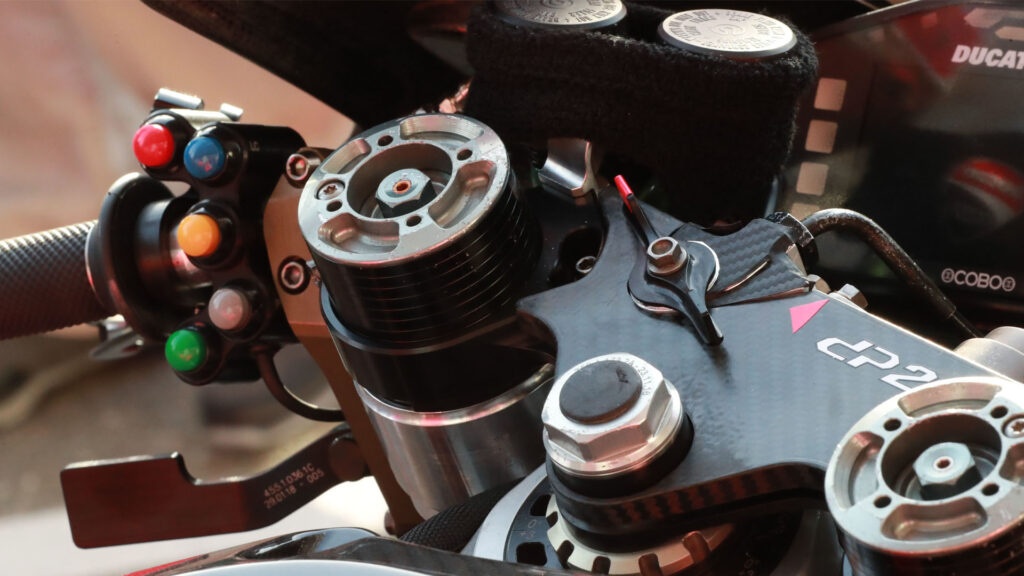- June 23, 2022
It’s Time for MotoGP to Bid GoodBye to Ride Height Devices

MotoGP is becoming monotonous. Here’s the thing: everyone is aware of the cause, and series executives Dorna must confront the responsible engineers and impose a moratorium on ride height devices.
From 10 races this year, the winning margin has averaged 2.5 seconds. There were a total of three overtakes for the lead in the four races with a winning margin of less than a second. In reality, just eight overtakes for the lead have occurred in MotoGP through half of the season. Three-quarters of the races have none.
That should be a pretty awful wake-up message for a series where the entire distinctive selling point used to be overpowering. Since its major opponent, Formula 1, has historically lacked in track action, it has been marketing itself as “the one with the passing” for years.
.
While the four-wheeled series hasn’t exactly been as spectacular lately as it was at Phillip Island in 2016, there’s no denying that things have improved as a result of a determined effort from the championship’s rights-holders, Liberty, to make the championship more of a spectacle overall.
It’s time for MotoGP owner Dorna to follow suit and set some ground rules for the frankly overbearing Motorcycle Sports Manufacturers Association, the body that makes rules for the teams, where only one of the (currently six, soon to be five) manufacturers needs to object to having any new rule overturned. This has been accomplished in part by forcing through regulation changes that teams were initially unhappy with.
The spread of rear ride height devices, the equipment that has become a standard issue since at least the middle of last year, is what has changed since 2019 and what has to be fixed to at least assist us to get back to where we were.
They make sure you aren’t wasting electricity doing just that when the lights go off. Created with the best of intentions to assist make starts faster and safer by lowering and then locking the rear suspension in a compressed position.
They have subsequently changed dramatically, with some manufacturers being able to engage them automatically practically every time a bend exits, crouching down the motorcycles for greater driving.
And because of the additional acceleration, overtaking is now considerably more difficult, especially when taking into account the other variables now at play in the MotoGP. Aerodynamics, which is still a factor in 2019 but is not the primary factor here, makes slipping-streaming more difficult due to foul air, and Michelin has received criticism for their tyres’ seeming inadequacy.
But that’s simply one more justification for outright banning ride height devices. The increased forces that are now being transmitted through Michelin’s tyres as a result of harsher acceleration and consequently more forceful braking were not intended for them. MotoGP has aggressively slashed testing, which has delayed the development of the tyres, making it difficult for them to keep up with the teams’ sudden and significant performance improvement.
In addition to bringing MotoGP to a competitive state, there is another rationale for eliminating these technologies. a more significant justification Two riders had to retire from the German Grand Prix last Sunday at the Sachsenring because their gadgets were stuck in the closed position, turning their motorcycles into drag racers and converting them into rolling chicanes amid the pack.
Jack Miller compared rear ride height devices to engines in his post-race remarks, saying that they are just another mechanical component that is susceptible to failure. However, it has been a very long time since MotoGP saw two engine failures in the same race.
Given that it has no other function than to let us move faster, what we’ve done is add another point of failure that is completely needless. There are no road bike development secrets to be revealed or technology to be passed in this situation.
MotoGP has done this before too, on the surface, saves money by coming up with a far more time-consuming and expensive solution to a problem. Due to the extremely short service intervals required, seamless transmissions were developed in its place after dual-clutch technology was banned just as it was beginning to find applications in road bikes.
Given that electronic active suspension has been available on production motorcycles for years, why not finally consider letting it into the premier class if the engineers do need a bone to be offered to them to convince them to render ride height devices obsolete?
Instead of just making MotoGP dull, it would help everyone and serve at least some of the same purposes as the squatting gadgets.
